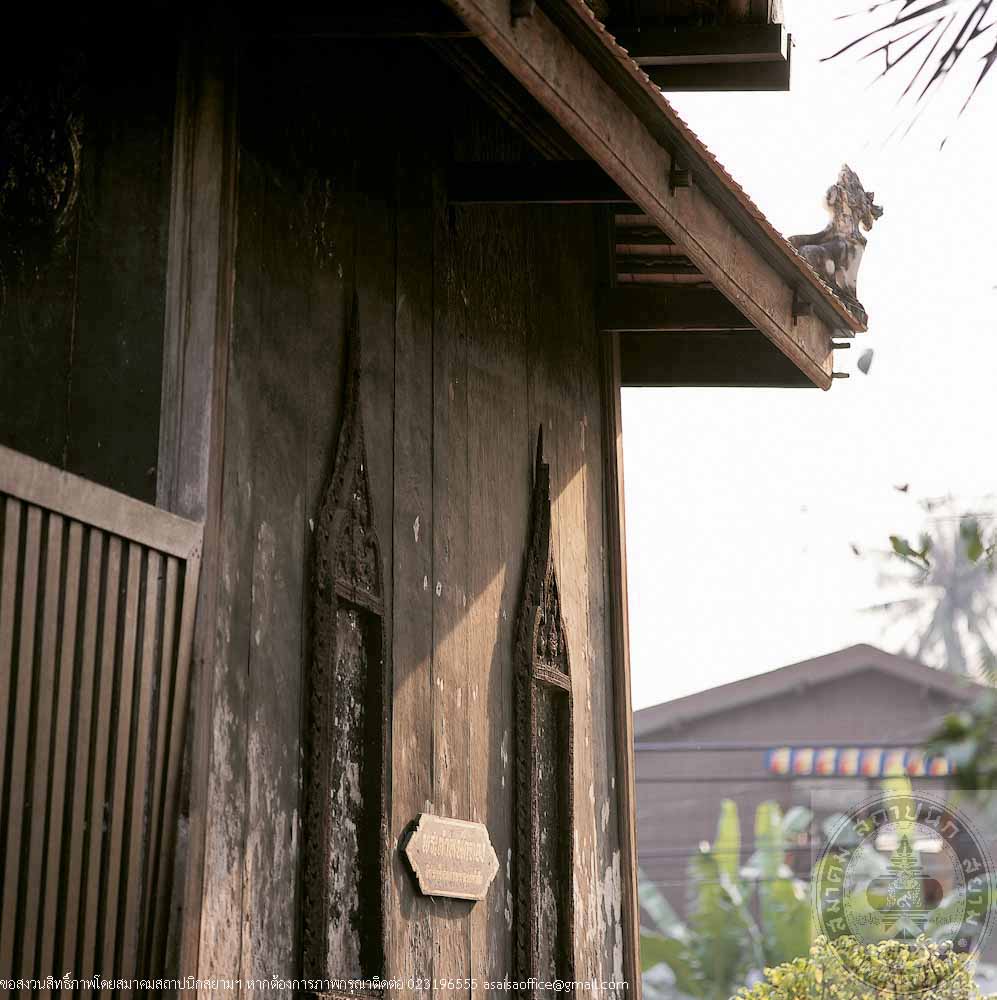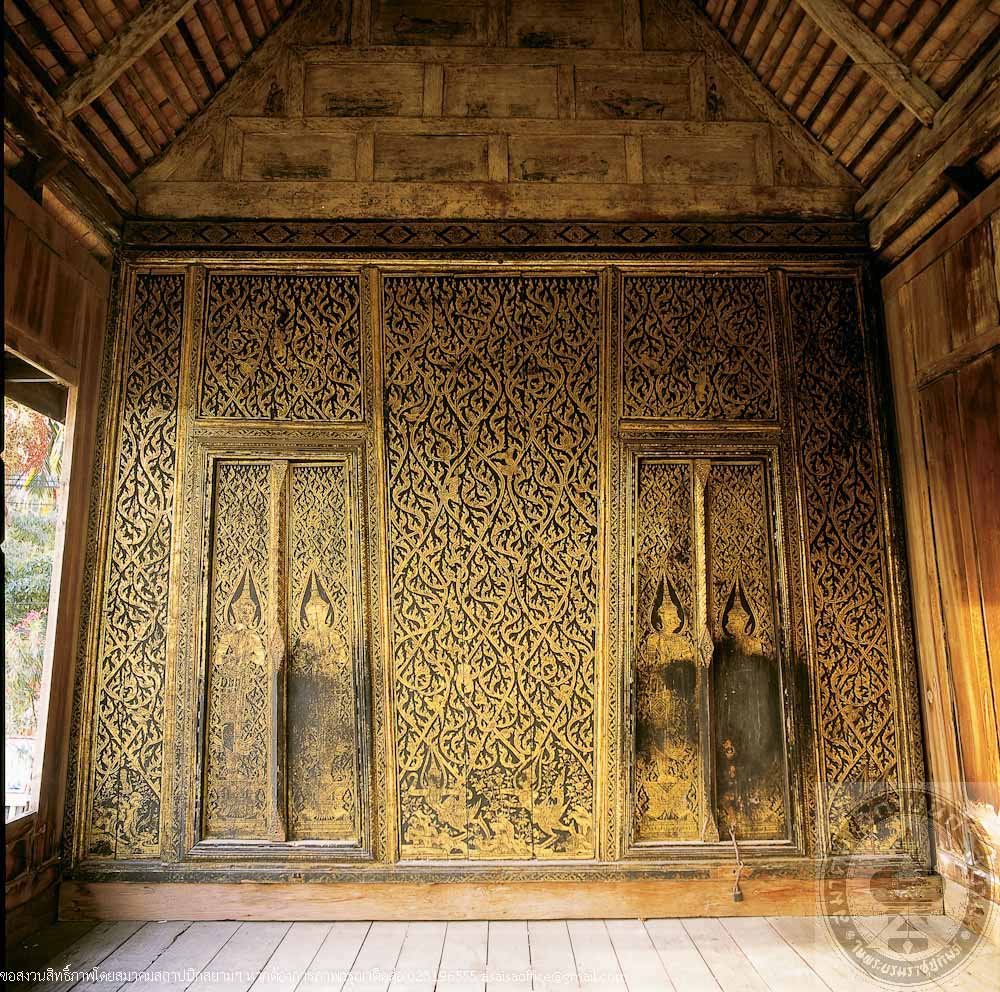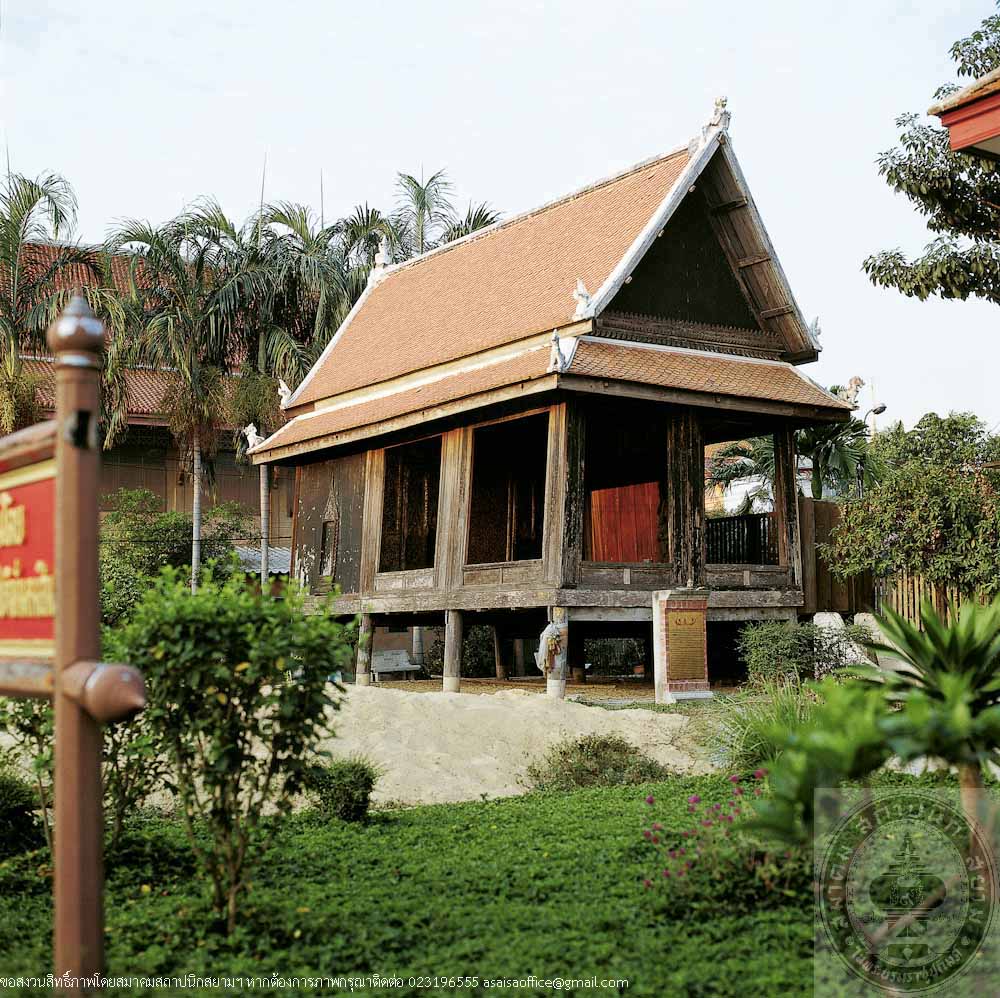ตำหนักพระเจ้าเสือ
ตำหนักพระเจ้าเสือ
ที่ตั้ง วัดไทร แขวงบางขุนเทียน เขตจอมทอง กรุงเทพมหานคร
ผู้ครอบครองวัดไทร
ปีที่สร้าง สมัยอยุธยา
ปีที่ได้รับรางวัล พ.ศ. 2547
ประวัติ
วัดไทรตั้งอยู่ริมคลองด่าน เป็นวัดที่มีความสำคัญมาตั้งแต่สมัยกรุงศรีอยุธยา มีหลักฐานปรากฏ คือ พระพุทธรูปหินทรายแดงสมัยอยุธยาหลายองค์ที่พบในเขตวัดและบริเวณคลองหน้าวัด ในวัดมีสิ่งปลูกสร้างที่สำคัญ ได้แก่ เจดีย์ หอระฆัง และตำหนัก พระเจ้าเสือ หรือที่รู้จักกันดีในชื่อว่า ตำหนักทอง เชื่อกันว่า สมเด็จพระสรรเพ็ชร์ที่ 8 (พระเจ้าเสือ) โปรดเกล้าโปรดกระหม่อม ให้สร้างขึ้นเพื่อเป็นที่ประทับแรมเมื่อเสด็จประพาสตามเส้นทางคลองด่าน ซึ่งเป็นเส้นทางที่สามารถออกทะเลได้ บางแห่งกล่าวว่าสมเด็จพระเจ้าอยู่หัวท้ายสระก็เคยเสด็จประทับแรมที่ตำหนักนี้เช่นกัน
ตำหนักพระเจ้าเสือเป็นเรือนไม้สักฝาเข้าลิ้นแบบฝาถัง ยกพื้นสูง เดิมตกแต่งด้วยลายรดน้ำโดยรอบ แต่ปัจจุบันลวดลายดังกล่าวลบเลือนไปเกือบหมด คงเหลือแต่ฝาประจันกั้นห้องด้านในเท่านั้นที่ยังมีลวดลายปิดทองอยู่เกือบสมบูรณ์ ภายในอาคาร กั้นเป็นห้องซึ่งสันนิษฐานว่าเป็นห้องบรรทม มีหน้าต่างหลอก กรอบหน้าต่างแกะเป็นฐานสิงห์และมีลวดลายแกะสลักไม้เป็น กรอบหน้าต่างลงรักปิดทองอย่างสวยงาม แต่ปัจจุบันชำรุดและลบเลือนไปบ้างตามกาลเวลา สมเด็จพระเจ้าบรมวงศ์เธอ เจ้าฟ้ากรมพระยานริศรานุวัดติวงศ์ ทรงนิพนธ์ไว้ในสาส์นสมเด็จว่า ลายสลักนี้เป็นฝีมือครั้งกรุงเก่า ส่วนลายเขียนทองที่ฝาเป็นฝีมือกรุงเทพไม่ต่ำลงมากว่ารัชกาลที่ 3 และเป็นฝีมือที่ดี จากความที่พระองค์ทรงนิพนธ์ไว้ดังกล่าว จึงสันนิษฐานว่า ตำหนักพระเจ้าเสือ ได้มีการปฏิสังขรณ์ในสมัยกรุงรัตนโกสินทร์ และได้มีการเขียนลายรดน้ำตกแต่งฝาในยุคนั้น หลังคาของตำหนักเป็นหลังคาจั่ว มุงกระเบื้อง ยอดจั่วตกแต่งด้วยปูนปั้นเป็นรูปครุฑ เหงาเป็นปูนปั้นรูปนาค มีปีกนกโดยรอบ
ตำหนักพระเจ้าเสือได้เคยใช้เป็นหอไตรของวัดอยู่ระยะหนึ่ง ปัจจุบันมิได้ใช้งาน กรมศิลปากรได้ขึ้นทะเบียน เป็นโบราณสถานในปี พ.ศ. 2505 และทางวัดได้อนุรักษ์มรดกอันล้ำค่าทางประวัติศาสตร์และสถาปัตยกรรมชิ้นนี้ไว้เป็นอย่างดีตลอดมาจนทุกวันนี้

ตำหนักพระเจ้าเสือ

ตำหนักพระเจ้าเสือ

ตำหนักพระเจ้าเสือ

ตำหนักพระเจ้าเสือ
-

ตำหนักพระเจ้าเสือ
-

ตำหนักพระเจ้าเสือ
-

ตำหนักพระเจ้าเสือ
-

ตำหนักพระเจ้าเสือ
Tamnak Phra Chao Suea (Golden Pavilion)
Location Wat Sai, Khwaeng Bang Khun Thian, Khet Chom Thong, Bangkok
Proprietor Wat Sai
Date of Construction Ayutthaya period
Conservation Awarded 2004
History
Wat Sai is located on the bank of Khlong Dan (Dan canal). It has been an important temple since Ayutthaya period, with evidences of several red sandstone Ayutthaya style Buddha images discovered in the temple precinct as well as in the canal in front of the temple. Significant structures are pagoda, bell tower, and Tamnak Phra Chao Suea, also known as “Tamnak Thong” (Golden Pavilion). Dated back to Ayutthaya period, or approximately 300 years ago, the building was built by order of Somdet Phra Sanphet VIII (Phra Chao Suea), who favoured traveling in the countryside, to be his residence during the trips along Khlong Dan, a route which leads to the sea. Some said that King Thai Sa also used to stay at this pavilion as well.
The architecture of Tamnak Phra Chao Suea is Thai traditional style, built of teakwood on high stilts. The original decorations were gilded lacquer works but most of them have faded. Merely in the interior partitions that the gilded decorations still remain in almost complete state. The inside of the building was divided into the King’s bedroom and private chambers. The bedroom was adorned with false windows, whose frames were elaborately carved and gilded in lion-foot designs and ravishing motifs. However, they have been partly deteriorateddue to the old age. H.R.H. Prince Krommaphraya Narisara Nuvadtivongse wrote that the carvings at Tamnak Thong were the craftsmanship of Ayutthaya period; whereas the gilded designs were the exquisite work of Bangkok period, prior to the reign of King Rama III. It could be summarized from the Prince’s comment that the pavilion has been restored during Rattanakosin period. Gilded lacquer works were added. The roof of the pavilion was created in gable tiled form and decorated at the top with stucco depicting a Garuda. Gable ends were made in shape of Nagas. The roof design was finished with a lower tier hipped roof spreading around the building.
Tamnak Phra Chao Suea once served as a scriptures hall for a period of time but it has no longer been used at present. Registered as a National Monument in 1962, it has continually been preserved by the temple until today.